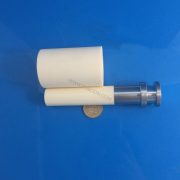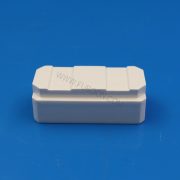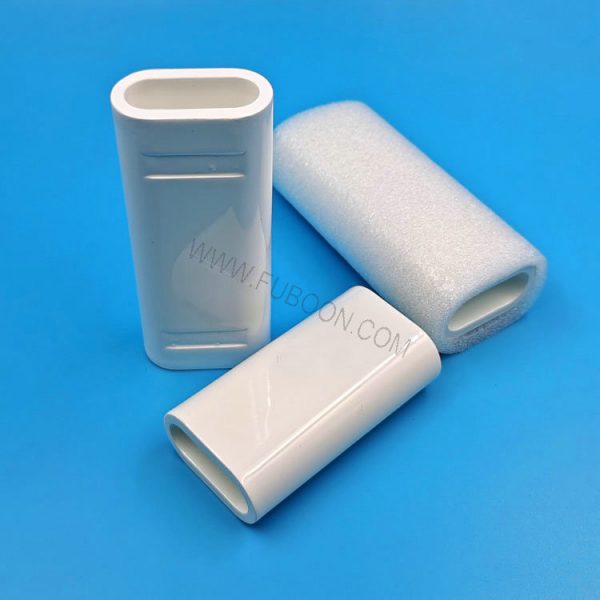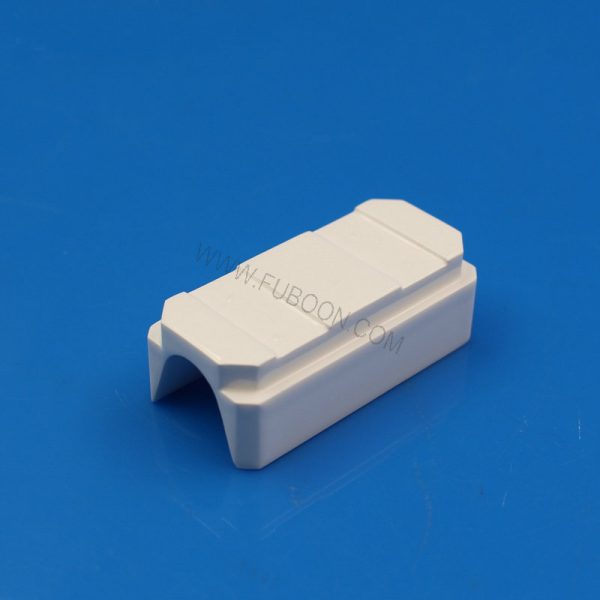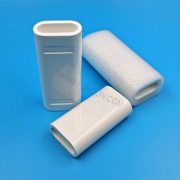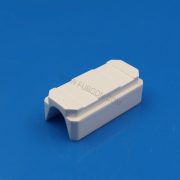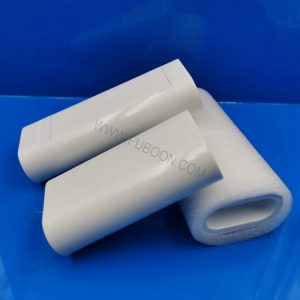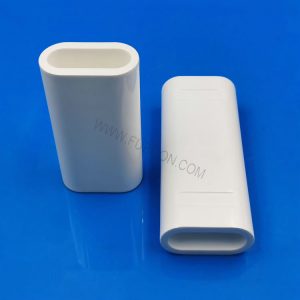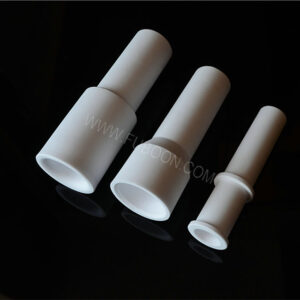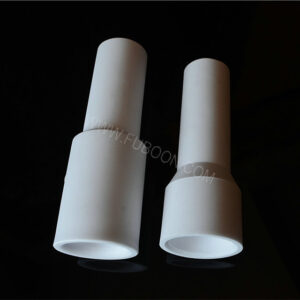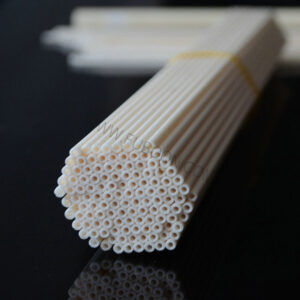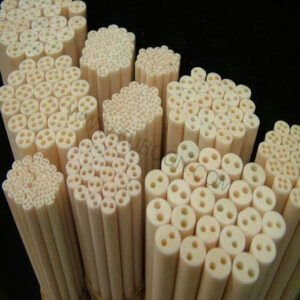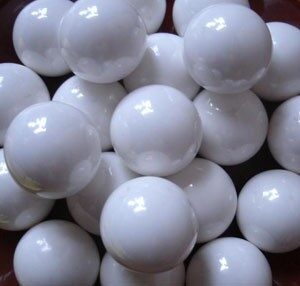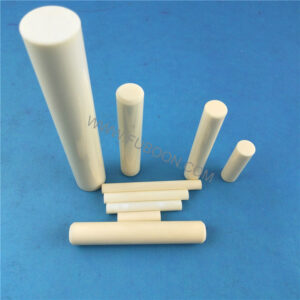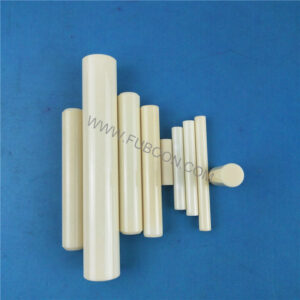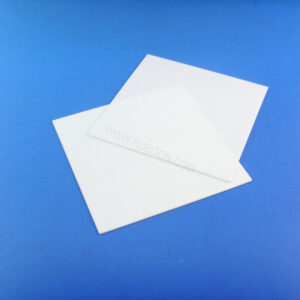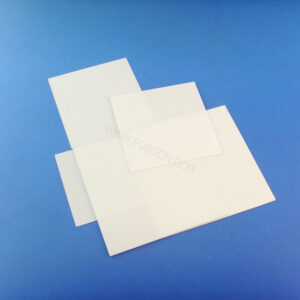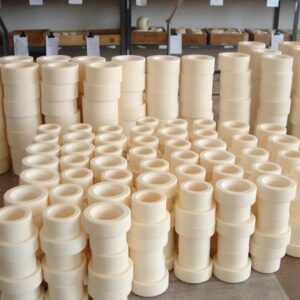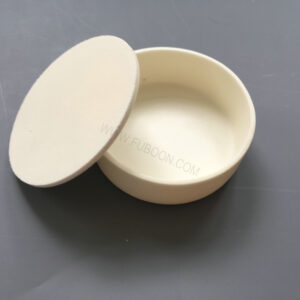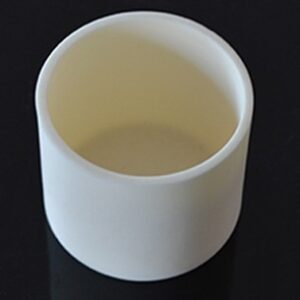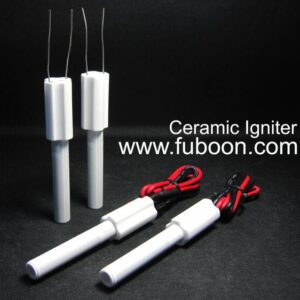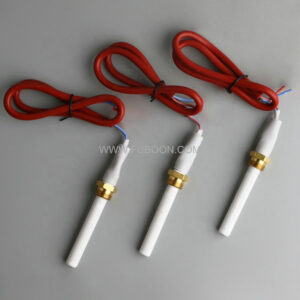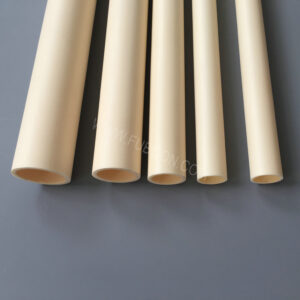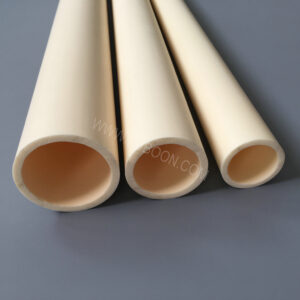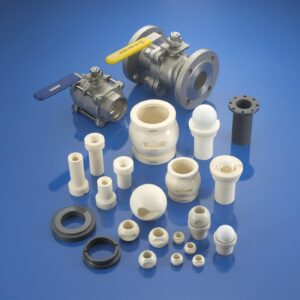Insulating Glazed Al2o3 Alumina Ceramic Reflector for YAG Laser
- Description
- Inquiry
Insulating Glazed Al2o3 Alumina Ceramic Reflector for YAG Laser
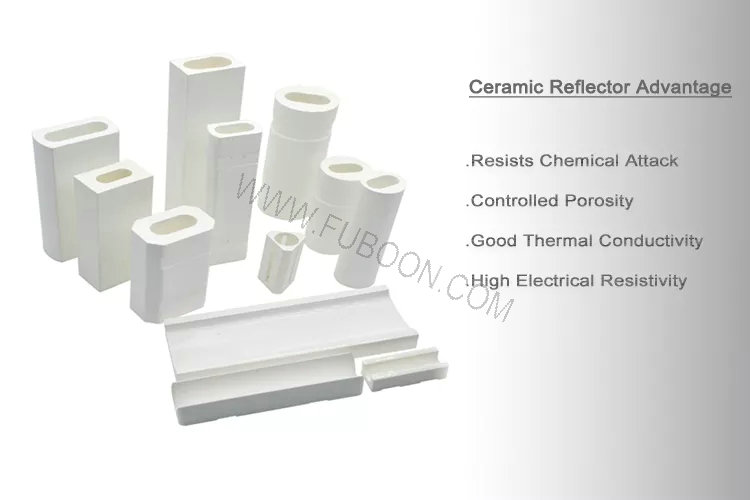
Ceramic Reflector Information:
Diffusive ceramic reflectors for Nd:YAG laserCeramic reflector typical application is pumping chambers for Nd:YAG lasers — low to high power, single or multiple lamp designs. Pumping chamber reflectors of this material are virtually indestructible, and prove a highly cost effective alternative to metal coated types. A porous alumina ceramic of 99.7% Al2O3 content, used extensively for long-life laser reflectors. This material is sintered at high temperatures to achieve a controlled porosity. Ceramic reflectors also can use many other kinds of lasers, such as for Diode-pumped Solid-state Lasers.
Part No. | BAB350 | Materail | 99 Alumina |
Size | 55.00×30.00×130.00 | Weight | 302.359g |
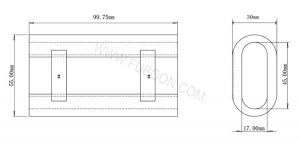
Insulating Glazed Al2o3 Alumina Ceramic Reflector for YAG Laser
Color: White
Bulk density (fired), Mg/m3 :3.2
Porosity (apparent), % nominal :20
Flexural strength (ASTM C1161, 3-point), MPa :150
Thermal expansion coefficient
200-500C, 10-6/C 7.9
200-1000C, 10-6/C 9.0
Compared to metal reflectors, ceramic units offer higher reflectivity and therefore enhanced laser power. Surfaces can be sealed and coated with a solarization-resistant glaze to give high bulk reflectivity
The description of high precision alumina ceramic parts
Alumina (Al2O3) is a hard-wearing technical ceramic material frequently used in a broad range variety of industries applications. After firing and sintering, the alumina ceramic parts can only be precisely machined using diamond-grinding methods. It’s charactered by high tighten tolerance, high hardness and wear resistance, low erosion levels, high-temperature resistance, corrosion resistance, and chemical stability. Furthermore, it can be highly polished making it a mirror surface to reduce friction at the fitting, working status.
We offer a selection of purities ranging from 95 – 99.8%. Our factory has access to many different types of shaping methods, including dry pressing, hot pressing, ceramic injection molding, ISO pressing, tape casting, and extruded.
Our facility is capable of machining a variety of complicated ceramic parts with a very high accuracy dimension through fine grinding, lapping, CNC machining, laser cutting, and so on.

